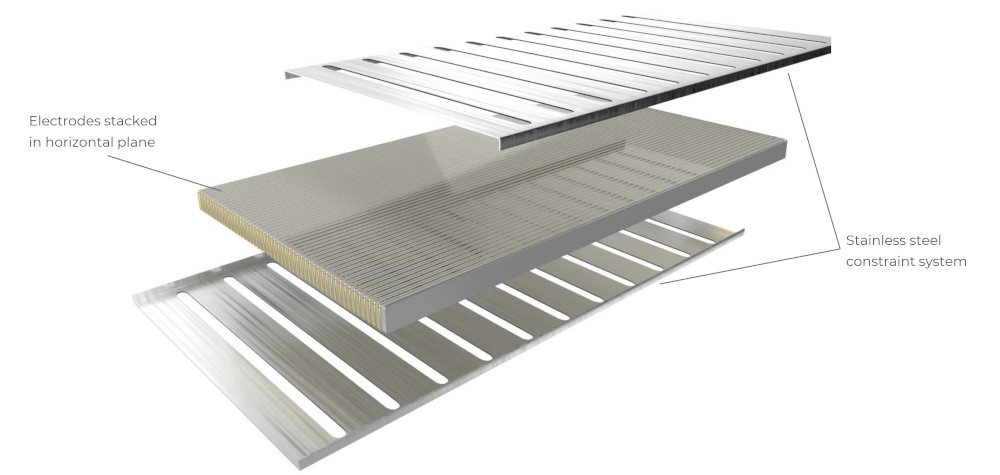Super-fast silicon cell charging

BATTERY CHARGING
Enovix has demonstrated 5 minute charging of its prototype silicon battery cells for EVs (writes Nick Flaherty).
Tests on the 0.27 Ah cells demonstrate charging from 0 to 80% charge in 5.2 minutes, and achieve a greater than 98% charge capacity in under 10 minutes. The cell uses a 100% silicon anode with an energy density of 1.8 Ah/cm3, more than twice that of graphite anodes at 800 mAh/cm3.
With a lithium cobalt oxide cathode in a 4.1 Ah cell, this gives a volumetric energy density of 900 Wh/litre, says Ashok Lahiri, chief technology officer of Enovix. With a higher performance NMC811 cathode with eight parts of nickel to one part of manganese and one part of cobalt, the cell can achieve an energy density of 950 Wh/litre in a cell with a capacity of 106 Ah.
A key issue with silicon anodes is that they swell when charging, especially during fast charging, which can split the cell and allow the lithium electrolyte to leak, potentially causing a fire. Enovix uses a steel construction for the cell to prevent this.
The 106 Ah cell has a gravimetric energy density of 320 Wh/kg, well above the current energy density of 255 Wh/kg from mainstream cells, indicating that the steel construction has not reduced the performance of the cell. The fact that the silicon anode is half the thickness of a graphite anode also helps to reduce the impact of the swelling.
Enovix has also developed an architecture that enables multiple parallel cell-to-busbar connections to minimise the impact of damage to the cell. BrakeFlow is a resistor with a set value placed at the busbar junction.
Normally, each electrode carries a small current, resulting in negligible energy loss but in the event of an internal short, the BrakeFlow resistor regulates the current flux to the short. This limits the short area from overheating and inhibits thermal runaway.
Other cells developed at Enovix with a 622NMC cathode have surpassed 1000 cycles while retaining 93% of their capacity. Testing also showed that after 6 months at elevated temperatures, the cells had minimal capacity loss. That would give them a lifetime of more than 10 years.
ONLINE PARTNERS





















